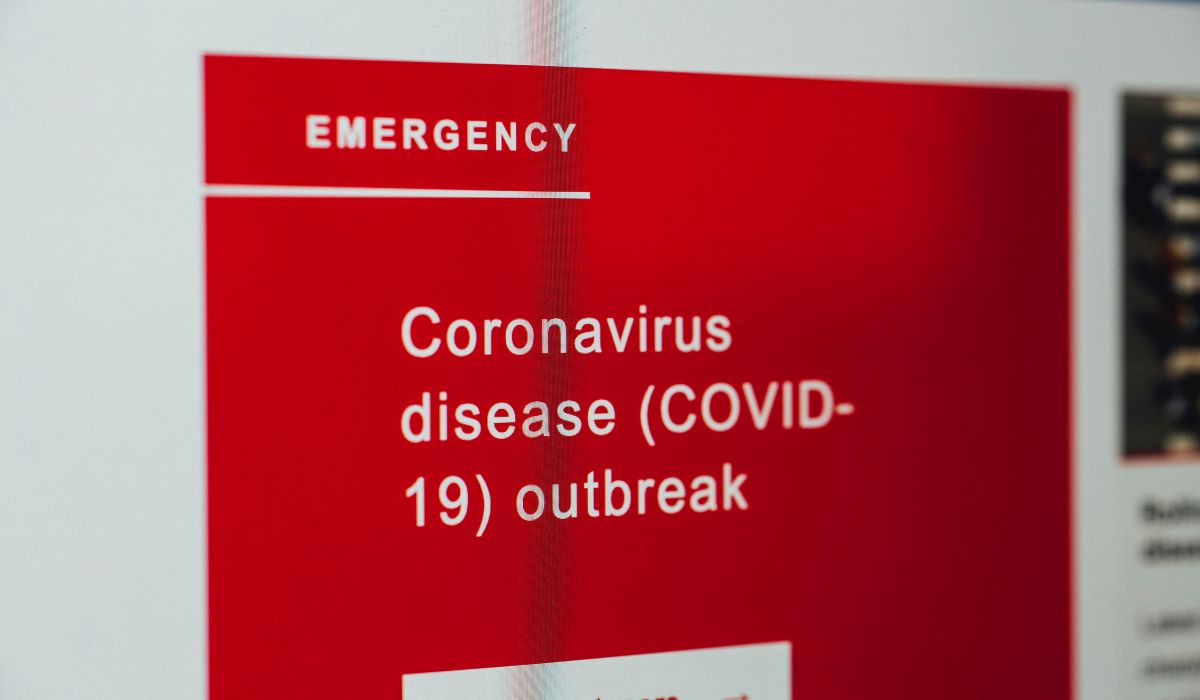ARTICLE SUMMARY:
Excerpts from the latest coronavirus analysis in MedTech Strategist, Market Pathways, and the Community Blog. Click the links to read full articles at MyStrategist.com.
The Enormity of SARS-CoV-2 Testing: The Challenges for Laboratory Leaders
Diagnostic quality is an often under-valued core requirement of the global healthcare system, but its lack of recognition comes at a high cost, as we are now learning from the coronavirus SARS-CoV-2 pandemic. Insufficient test supply and regulatory missteps led to information gaps that are delaying our ability to characterize the virus and reduce its morbidity. These mistakes have had dire health and economic consequences.
To get some perspective, we spoke on March 16 to Jim Crawford, MD, PhD, chair of Pathology and Laboratory Medicine for the Zucker School of Medicine at Hofstra/Northwell and SVP, Laboratory Services, Northwell Health in New York.
 Northwell Health is the largest healthcare system in New York State, and at the epicenter of the US outbreak. The decisions Crawford and others on Northwell’s team make about scaling quickly and accurately are crucial to how well New York weathers this storm. The situation is “exhilarating and exhausting, and the laboratory industry is in a full sprint right now. It is stepping up and so is the entire supply chain for healthcare,” says Crawford.
Northwell Health is the largest healthcare system in New York State, and at the epicenter of the US outbreak. The decisions Crawford and others on Northwell’s team make about scaling quickly and accurately are crucial to how well New York weathers this storm. The situation is “exhilarating and exhausting, and the laboratory industry is in a full sprint right now. It is stepping up and so is the entire supply chain for healthcare,” says Crawford.
The US effort to implement widespread testing started almost from scratch, due to slow government decision-making in January and February. That said, Crawford notes that while the country lost precious time in not responding promptly to the emerging threat from China, “this [effort] is about the present and the future.” Northwell, like most major academic medical centers, had been preparing for this epidemic for weeks, but its journey intensified dramatically on February 29 when the FDA gave New York State and New York City departments of health permission to expedite testing, putting Northwell and other academic medical center laboratories throughout the state on the alert. Northwell’s near-term plan is to offer a mix of LDTs and commercially available, EUA tests, which can run on its automated and semi-automated platforms in its centralized lab and hospital labs, respectively; point-of-care testing at ambulatory sites and physicians’ offices will follow when feasible.
The lightning timeline for ramping up shows just how quickly events are moving, and how flexible health systems have to be. Northwell received control samples via express courier from the NYS DOH on March 5, enabling it to start validating the CDC test, which it completed on March 7. The next day, March 8, with authorization from the NYS DOH, Northwell went live with its first SARS-CoV-2 test, a manual assay based on the CDC protocols. As of March 10, the laboratory could run 90 tests per day using that assay at a turnaround time of several hours, with capacity constraints due to limited supplies of reagents and workforce availability. It was a drop in the bucket considering demand, but an important first step in breaking the bottleneck.
Beginning on March 11, the system was able to run about 200 tests a day in its central lab by bringing up a semi-automated POCT made by GenMark Diagnostics Inc., a diagnostic instrument manufacturer; again it was able to do this quickly because the NYS DOH reviewed the test validation data within 24 hours of its submission. (The test came into Northwell about eight days in advance of GenMark’s March 19 EUA with FDA.) GenMark instruments are already widely used throughout Northwell system hospitals for testing assorted respiratory diseases and have received-to-result turnaround times of 24 hours or less, so the potential for system-wide testing came into view, Crawford says. The benefits were clear but expanding testing beyond two hundred tests daily was problematic because of limitations in GenMark’s capacity to deliver enough kits. NYS DOH authorization for kits to run on high-throughput systems, however, was the biggest leap so far to scaling testing. With state approval, on March 18, Northwell activated its two Hologic Panther platforms for automated testing. This additional capacity enabled the laboratory to ramp to 2,800 SARS-CoV-2 tests per day by March 22—a 30-fold increase in daily testing over two weeks.
Posted on Market Pathways , March 26, 2020
Reform in the Time of Coronavirus? Diagnostics Bill Surfaces as Pandemic Escalates
Progress toward long-sought reforms to coalesce the fragmented US diagnostics regulatory system has come just as the COVID-19 pandemic is shining a bright light on some of the quirks and shortcomings of the current system. How this unprecedented experience will shape the future debate is still open to question.
Comprehensive reform legislation called the VALID Act was introduced March 5 by a set of Democrats and Republicans in both the House and Senate. It would create a new regulated product category distinct from medical devices, called In Vitro Clinical Tests. IVCTs would combine manufactured test kits and laboratory developed test (LDT) services into one consistent regulatory framework based on the standard of analytical and clinical validity (as opposed to the “safety and effectiveness” standard for devices).
legislation called the VALID Act was introduced March 5 by a set of Democrats and Republicans in both the House and Senate. It would create a new regulated product category distinct from medical devices, called In Vitro Clinical Tests. IVCTs would combine manufactured test kits and laboratory developed test (LDT) services into one consistent regulatory framework based on the standard of analytical and clinical validity (as opposed to the “safety and effectiveness” standard for devices).
It is the latest evolution in what has been a decades-long effort to reach the right balance in a system where tests are subject to different oversight depending on who makes them (manufacturer vs. lab) and how they are offered to the market (packaged kit vs. service). FDA has been trying to exert authority over LDTs for years.
FDA has made multiple attempts to bring at least the higher risk LDTs into its regulatory paradigm. But those efforts have been unsuccessful in the face of a skeptical lab community. The agency’s decision to push the issue before Congress several years ago was seen as the best hope to reach a solution. And the VALID Act seems like it could fit the bill.
The chances of the bill passing this year, a highly contentious election year, remained low. Then came the novel coronavirus, spotlighting some of the oddities of the current system for all the country to see.
Posted on Market Pathways, March 24, 2020
China’s Rapid Switch to eSubmissions Reaps COVID-19 Benefits; FDA on Slower Path
China is touting its 2019-launched electronic registration system (eRPS) as a key factor in expediting COVID-19 diagnostic and device reviews. The country’s National Medical Products Administration is ahead of some other device authorities, including FDA, in adopting pre-market online, electronic device submissions, for emergency andnon-emergency use.
 As the COVID-19 outbreak hit China, officials saw an opportunity to leverage the platform as a means to help reduce virus infection by limiting face-to-face interactions. The eRPS system allows a device company to make a submission electronically using a secure “Certificate Authority” digital key. The reviewer is then able to access the submission from anywhere, including home, with a Certificate Authority, according to NMPA.
As the COVID-19 outbreak hit China, officials saw an opportunity to leverage the platform as a means to help reduce virus infection by limiting face-to-face interactions. The eRPS system allows a device company to make a submission electronically using a secure “Certificate Authority” digital key. The reviewer is then able to access the submission from anywhere, including home, with a Certificate Authority, according to NMPA.
China’s eRPS system is built on a template that harmonizes with format guidelines from the International Medical Device Regulators Forum (IMDRF). Electronic device submissions seem like a low bar to meet in our modern, online world. But the challenge for device regulators is that the massive diversity in medical devices makes it difficult to establish a standardized template that has broad application.
Addressing that standardization challenge has been a key focus of FDA for years. But the US agency is still in an early stage of transition to all-digital pre-market device submissions.
Posted on Market Pathways, March 17, 2020
Mologic Preps Rapid POC COVID-19 Test for Regulatory Review
Diagnostic test developers have long struggled to develop rapid, inexpensive and highly accurate point-of-care tests for infectious diseases, where time to results is critical. Such tests, while available today, are imperfect at best for common conditions, and don ’ t exist for the new SARS-CoV-2 virus, a failure that is all too glaring.
 The world is learning about these gaps the hard way. The vast majority of the manufacturers jumping onto the SARS-CoV-2 diagnostics bandwagon are offering molecular tests using RT-PCR methods, which perform with high sensitivity but must be run in centralized laboratories, where capacity is constrained and time to results can take hours at best. That s not good enough for a pandemic.
The world is learning about these gaps the hard way. The vast majority of the manufacturers jumping onto the SARS-CoV-2 diagnostics bandwagon are offering molecular tests using RT-PCR methods, which perform with high sensitivity but must be run in centralized laboratories, where capacity is constrained and time to results can take hours at best. That s not good enough for a pandemic.
Amid the rush of laboratories and diagnostics manufacturers, a few companies are trying to fill this gap by developing low-cost immunoassay tests with vastly improved accuracy.
One of these, the British company Mologic Ltd., has been at it a long time for other diseases with a straightforward but cutting-edge antibody development platform. The approach it is taking for SARS-CoV-2 demonstrates the variables that go into making such a test and knowledge of those could help outsiders assess progress of these efforts.
Posted on MedTech Strategist, March 17, 2020
![]() Trial MyStrategist.com and unlock 7-days of exclusive subscriber-only access to the medical device industry's most trusted strategic publications: MedTech Strategist & Market Pathways. For more information on our demographics and current readership click here.
Trial MyStrategist.com and unlock 7-days of exclusive subscriber-only access to the medical device industry's most trusted strategic publications: MedTech Strategist & Market Pathways. For more information on our demographics and current readership click here.
